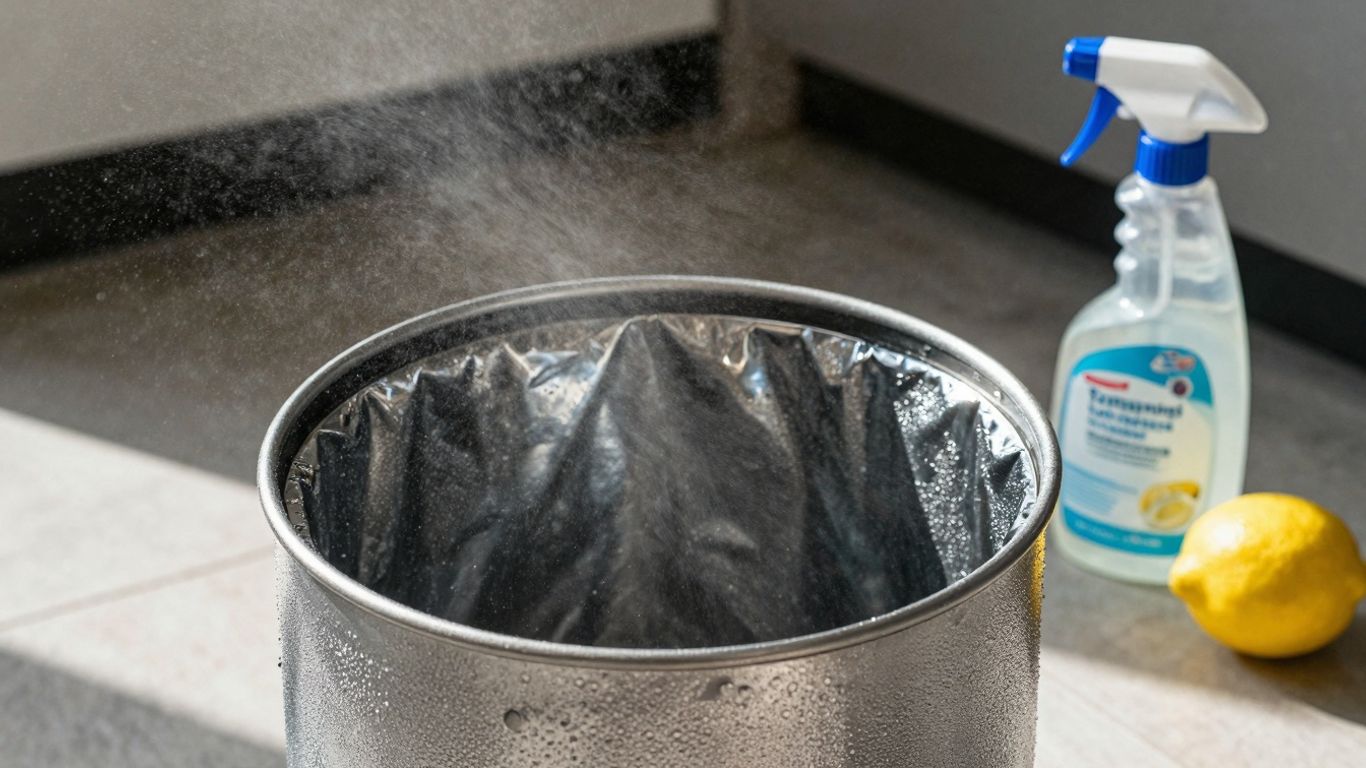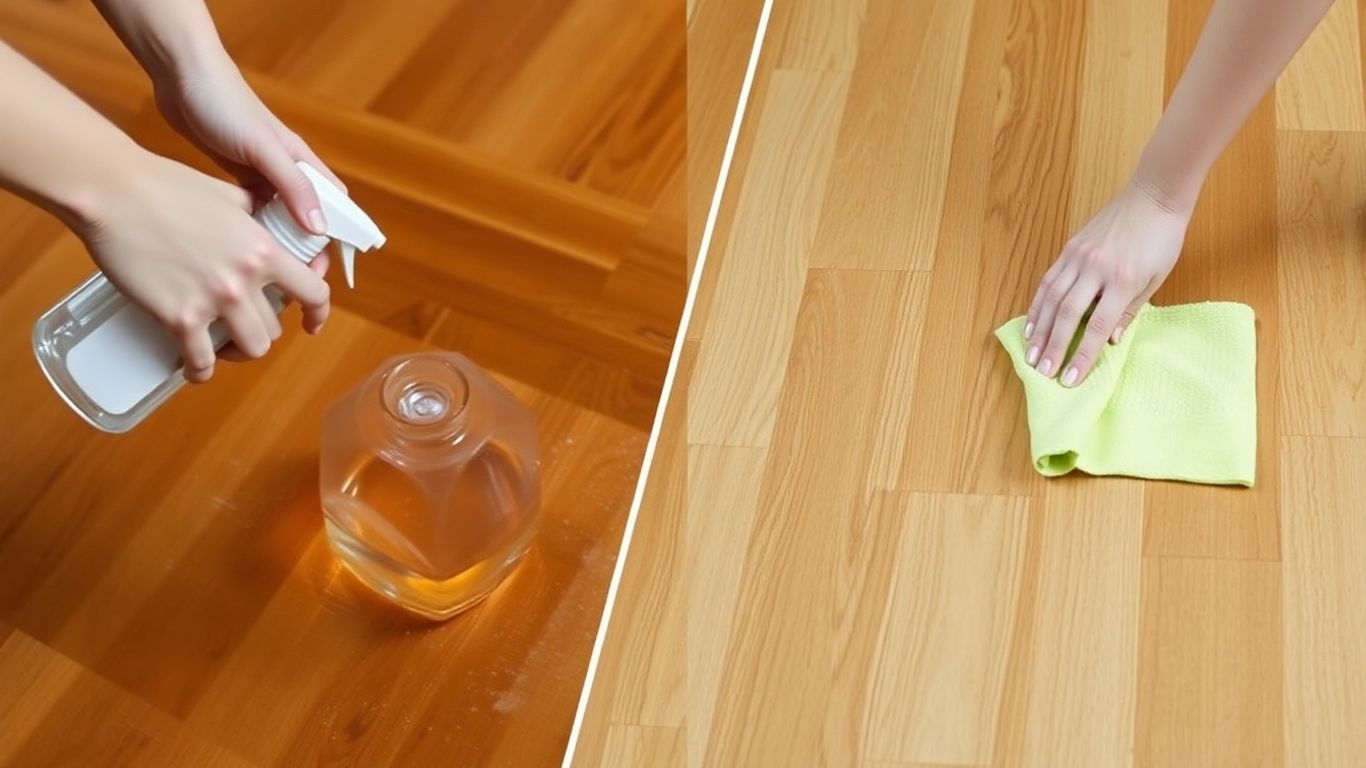Keeping your home tidy and clean is more than just about looks; it’s about creating a space that feels good and supports your well-being. Sometimes, though, life gets busy, and that deep clean gets pushed back. We’ve put together some straightforward tips and techniques to help you get your home looking and feeling its best, without making it a full-time job. Let’s get your living space back in shape!
Key Takeaways
- Make cleaning a habit by setting up a regular schedule, even if it’s just a few minutes each day.
- Decluttering is your best friend; use methods like the three-box approach to decide what stays and what goes.
- Organize your spaces with purpose, giving everything a home to make tidying up quicker.
- Switch to healthier cleaning practices by choosing eco-friendly products or making your own natural solutions.
- Invest in good cleaning tools and keep your supplies organized and easy to reach for when you need them.
Establish Your Cleaning Rhythm
Keeping a clean home doesn’t have to feel like a constant battle. The secret is to build a rhythm, a natural flow of tasks that keeps things tidy without overwhelming you. Think of it less like a chore list and more like a gentle hum that keeps your home running smoothly. Consistency is key, and establishing a predictable pattern makes all the difference.
Create A Consistent Cleaning Schedule
Having a plan is half the battle. Instead of cleaning when things get really bad, which can feel like a huge undertaking, break it down. A schedule helps you tackle tasks in manageable chunks. You can map out what needs doing daily, weekly, and even monthly. This way, you’re always staying on top of things, and those big, dreaded cleaning days become much less frequent. It’s about making cleaning a habit, not a crisis.
Incorporate Daily Tidy-Up Tasks
These are the small wins that add up. Think of them as your home’s daily maintenance. Things like wiping down kitchen counters after meals, doing a quick sweep of the main living areas, or making your bed in the morning. These little actions prevent clutter and dirt from building up. They take just a few minutes but make a huge difference in how your home feels. It’s amazing how much calmer a space feels when it’s not a mess.
- Wipe down kitchen counters and sink.
- Do a quick sweep or vacuum of high-traffic floors.
- Make your bed.
- Put away items that are out of place.
Small daily habits are the foundation of a clean home. They prevent small messes from becoming big problems and make your weekly cleaning sessions much easier.
Embrace Weekly Deep Cleaning Sessions
While daily tidying keeps things in check, weekly sessions are where the real magic happens for a truly healthy home. This is when you tackle the tasks that need a bit more time and attention, like mopping floors, dusting those hard-to-reach spots, or giving the bathroom a thorough scrub. You can set aside a specific day for this, or spread the tasks out over a few days. The goal is to dedicate time to these more involved chores so your home stays hygienic and pleasant. For a detailed breakdown of what to include, check out this room-by-room deep cleaning checklist.
Here’s a sample of what your weekly deep clean might look like:
| Area | Tasks |
|---|---|
| Kitchen | Mop floor, clean appliance exteriors |
| Bathroom | Scrub shower/tub, clean toilet, mop floor |
| Living Room | Dust all surfaces, vacuum upholstery |
| Bedrooms | Dust surfaces, vacuum floors |
Master The Art Of Decluttering
Let’s be honest, clutter can sneak up on you. One minute your home feels spacious, and the next, it’s like a stuffy storage unit. Tackling clutter isn’t just about making things look neat; it’s about creating a more peaceful and functional living space. It’s about making room for what truly matters.
Utilize The Three-Box Method
This is a classic for a reason. When you’re ready to tackle a room or a specific area, grab three boxes or bins. Label them clearly: ‘Keep,’ ‘Donate/Sell,’ and ‘Trash.’ Go through your items one by one and make a quick decision. Don’t overthink it! If you haven’t used something in a year, or if it doesn’t bring you joy or serve a real purpose, it probably belongs in the ‘Donate/Sell’ or ‘Trash’ box. This method helps you make swift, decisive moves and prevents you from just shuffling things around.
Embrace A Minimalist Mindset
Thinking about minimalism doesn’t mean you have to live in a stark white box with only three possessions. It’s more about being intentional with what you bring into your home and what you keep. Ask yourself: Does this item add value to my life? Do I use it regularly? If the answer is no, it might be time to let it go. Embracing this mindset helps prevent future clutter buildup. It’s about quality over quantity, and making conscious choices about your belongings. You can find some great ideas for simplifying your life and home by looking into intentional living practices.
Sort And Purge Belongings Regularly
Decluttering isn’t a one-and-done event; it’s an ongoing process. Make it a habit to regularly go through your things. This could be a quick sweep of your mail pile each evening, a monthly check of your closet, or a seasonal review of your garage. The key is consistency.
Here’s a simple way to think about it:
- Daily: Quick tidy-ups, putting things back where they belong.
- Weekly: Tackle a specific drawer, shelf, or small area.
- Monthly: Review a larger category, like books or clothing.
- Seasonally: A more thorough purge of closets, storage areas, and the garage.
Regularly sorting and purging helps maintain a sense of order and prevents small piles from becoming overwhelming mountains of stuff. It’s about staying ahead of the game so your home feels calm and manageable, not chaotic.
Organize Every Space With Purpose
Okay, so you’ve got a cleaning rhythm going and you’re getting a handle on the clutter. That’s awesome! Now, let’s talk about making sure everything has its place. When your home is organized, cleaning becomes way easier, and honestly, it just feels better to be in a space where things aren’t constantly underfoot. It’s about creating systems that work for you and your household.
Streamline Your Kitchen Storage
The kitchen is often the heart of the home, and it can also be a magnet for chaos. Think about how you use your kitchen. Are pots and pans easily accessible when you’re cooking? Are your spices organized so you can actually find what you need? Investing in a few simple storage solutions can make a huge difference. Drawer dividers are fantastic for utensils, and clear, labeled containers for your pantry items mean you can see what you have at a glance. This helps prevent buying duplicates and makes meal prep a breeze. Don’t forget about that often-overlooked space under the sink – a tiered organizer can work wonders for cleaning supplies.
Tidy Up Your Bathroom Essentials
Bathrooms can get cluttered fast with all those little bottles and tubes. A good starting point is to pull everything out and sort through it. Toss anything expired or that you haven’t used in ages. Then, think about how you can group similar items. Small baskets or drawer organizers can keep your makeup, skincare, and toiletries neat and tidy. For towels, consider rolling them instead of folding to save space on shelves. Keeping your cleaning supplies organized here is also key, maybe in a caddy that you can easily grab when it’s time to clean.
Designate Zones For High-Traffic Areas
Think about the areas in your home that get the most action – the entryway, the living room, maybe a family command center. Creating specific zones for these areas can help keep them from becoming dumping grounds. For an entryway, this might mean a designated spot for shoes, a hook for keys, and a small basket for mail. In the living room, perhaps a stylish ottoman with storage for blankets and remotes, or a bookshelf that’s organized with books and a few decorative items. The idea is to give everything a home, so it’s easy to put things away after use. This approach makes maintaining a tidy home feel less like a chore and more like a natural part of your day.
Embrace Healthier Cleaning Practices
Making the switch to healthier cleaning methods isn’t just about a sparkling home; it’s about creating a safer environment for everyone living in it. Think about it: the products we use can end up in the air we breathe and on the surfaces we touch. So, choosing wisely makes a real difference.
Choose Eco-Friendly Cleaning Products
When you’re at the store, take a moment to look at the labels on cleaning supplies. Many conventional cleaners contain harsh chemicals that can be tough on your lungs and skin, not to mention the planet. Opting for products labeled as ‘eco-friendly,’ ‘plant-based,’ or ‘biodegradable’ is a good start. These are often formulated with gentler ingredients that still get the job done effectively. You might find that some brands you already use offer greener alternatives. It’s worth exploring options for greener cleaning to see what works best for your home and your family’s needs.
Whip Up Your Own Natural Solutions
For a truly natural approach, you can create your own cleaning powerhouses right in your kitchen. It’s surprisingly simple and cost-effective. For instance, a mixture of white vinegar and water in a spray bottle is fantastic for cleaning windows and countertops. Baking soda is a gentle abrasive that works wonders on scrubbing sinks and tubs. You can even add a few drops of essential oils, like lemon or tea tree, for a pleasant scent and added cleaning properties. These DIY solutions mean you know exactly what’s going into your cleaning routine.
Focus On High-Touch Germ Hotspots
Some areas in your home get touched way more than others, making them prime spots for germs to hang out. Think about things like:
- Doorknobs and handles (front door, interior doors, cabinet doors)
- Light switches and wall plates
- Remote controls and gaming controllers
- Phone and tablet screens
- Kitchen and bathroom faucets
Giving these spots a regular wipe-down with a disinfectant (whether store-bought or homemade) can really help keep your home healthier. It’s a small effort that pays off big time in reducing the spread of germs.
Equip Yourself For Success
Having the right gear makes all the difference when you’re tackling a deep clean. It’s not just about having stuff; it’s about having the right stuff, organized and ready to go. This makes the whole process so much smoother, and honestly, a lot less of a chore.
Invest In The Right Cleaning Tools
Think of your cleaning tools like your trusty sidekicks. You wouldn’t go into battle without your armor, right? Same goes for cleaning. Having good quality tools means less scrubbing for you and a better result. Microfiber cloths are amazing for dusting and polishing without scratching surfaces. A good quality mop and broom are non-negotiable for floors. And don’t forget a reliable vacuum cleaner; it’s a game-changer for carpets and hard floors alike. Having a solid set of cleaning tools can really make your cleaning routine more efficient and effective. You can find a great selection of cleaning supplies to get you started here.
Organize Your Cleaning Supplies
Okay, so you’ve got the tools. Now, where do they all go? A jumbled mess of bottles and rags in a dark corner isn’t going to help anyone. It’s best to keep your cleaning supplies in one designated spot. This could be a caddy, a shelf in a closet, or even a rolling cart. Grouping similar items together is super helpful. Think: all your bathroom cleaners in one section, kitchen sprays in another, and your cloths and sponges together. This way, you’re not digging around for what you need when you’re in the middle of a task.
Here’s a simple way to think about organizing:
- By Room: Keep a small kit for the kitchen and another for the bathroom. This way, you have what you need right where you need it.
- By Task: Group items for dusting, scrubbing, and floor cleaning.
- By Product Type: All your sprays together, all your wipes together, etc.
Keep Supplies Accessible And Stocked
Once everything is organized, make sure it’s easy to grab. If your cleaning supplies are tucked away in the back of a deep cabinet, you’re less likely to use them. Keep them somewhere you can see and reach them easily. And just as important as organization is making sure you don’t run out of essentials. Nothing is more frustrating than being halfway through cleaning the bathroom and realizing you’re out of all-purpose cleaner. A quick check every week or so to see what’s running low and adding it to your shopping list will save you a lot of hassle.
A well-organized and stocked cleaning supply station means you can tackle messes as they happen, rather than letting them pile up. It turns cleaning from a dreaded chore into a manageable task.
This approach helps maintain a consistently clean home without the last-minute scramble for supplies.
Tackle Seasonal Deep Cleaning
Think of seasonal deep cleaning as hitting the reset button for your home. It’s that time of year when you really get into the nooks and crannies that your regular cleaning routine might miss. It’s not just about making things look good; it’s about creating a healthier environment for you and your family. Plus, tackling these bigger tasks a few times a year can actually make your regular cleaning feel way easier.
Prepare For A Fresh Start
Seasonal cleaning is the perfect opportunity to give your home a thorough refresh. It’s like spring cleaning in the spring, or a good fall clean-out before winter really sets in. This is when you can really declutter and get rid of things you don’t need anymore. Think about clearing out closets, basements, or garages. Sorting items into categories like ‘keep,’ ‘donate,’ or ‘discard’ makes the whole process much smoother and helps you organize better later on.
Create A Deep Cleaning Checklist
Having a checklist is super helpful so you don’t forget anything. You can break it down by room or by task. Here’s a basic idea of what to include:
- Windows and Doors: Wash windows inside and out, wipe down frames and sills, and clean exterior doors.
- Walls and Ceilings: Dust or wipe down walls, especially in high-traffic areas. Don’t forget to sweep down cobwebs from corners.
- Floors: Deep clean carpets (shampooing if needed), wash hard floors thoroughly, and pay attention to baseboards.
- Upholstery and Curtains: Vacuum or clean upholstery. Wash or dry-clean curtains and drapes.
- Lighting Fixtures: Dust and clean light fixtures and ceiling fans.
Address Kitchen Grime and Grout
The kitchen is often the heart of the home, and it sees a lot of action, especially around holidays. Seasonal deep cleaning means tackling those tougher kitchen jobs. This includes things like cleaning out the refrigerator and oven, scrubbing down cabinets, and getting into the grout lines on your tile floors or backsplash. Using natural solutions like baking soda and vinegar can be really effective for cutting through grease and grime without harsh chemicals. It’s a good idea to focus on sanitizing countertops and sinks too, since they’re used so much.
Seasonal deep cleaning isn’t just about tidying up; it’s about maintaining a healthy living space. By dedicating time to these bigger tasks a few times a year, you prevent build-up and make your home a more pleasant place to be.
Keep It Up!
So there you have it! Getting your home truly clean and organized doesn’t have to be a huge, scary project. By breaking things down into smaller steps, like doing a little bit each day and tackling bigger tasks weekly, you can totally manage it. Remember, a tidy space isn’t just about how it looks; it really does make you feel better and less stressed. Plus, it’s way easier to find things! Keep up with these tips, and you’ll have a home that feels good to live in, for you and everyone else.
Frequently Asked Questions
How often should I really clean my home?
It’s a good idea to clean your home regularly. Think about doing quick tidy-ups every day, like wiping down counters or making your bed. Then, set aside time each week for bigger tasks, like mopping floors or scrubbing the bathroom. This keeps things from getting too messy.
What’s the easiest way to get rid of stuff I don’t need?
A simple method is the ‘three-box’ trick. Get three boxes and label them: ‘Keep,’ ‘Donate,’ and ‘Trash.’ Go through your things and quickly decide which box each item belongs in. It makes decluttering much faster and less confusing.
Are those fancy cleaning sprays really necessary?
Not at all! You can clean most things with simple, natural stuff. Things like vinegar and baking soda work wonders for cleaning and disinfecting. Plus, they’re better for you and the planet than harsh chemicals.
My cleaning supplies are always a mess. Any tips?
Yes! Keep all your cleaning stuff together in one spot, maybe a caddy or a specific shelf. Group similar items, like all your bathroom cleaners together. This way, you know exactly where to find what you need when you need it.
How can I stop my home from getting cluttered again so fast?
The key is to be mindful of what you bring into your home and to put things away right after you use them. Try to have a place for everything. Also, regularly go through your belongings and let go of things you don’t use or love anymore.
What are the most important spots to clean for health reasons?
Focus on the things people touch a lot. This includes doorknobs, light switches, remote controls, and kitchen counters. Wiping these down regularly helps get rid of germs and keeps your home healthier for everyone.





